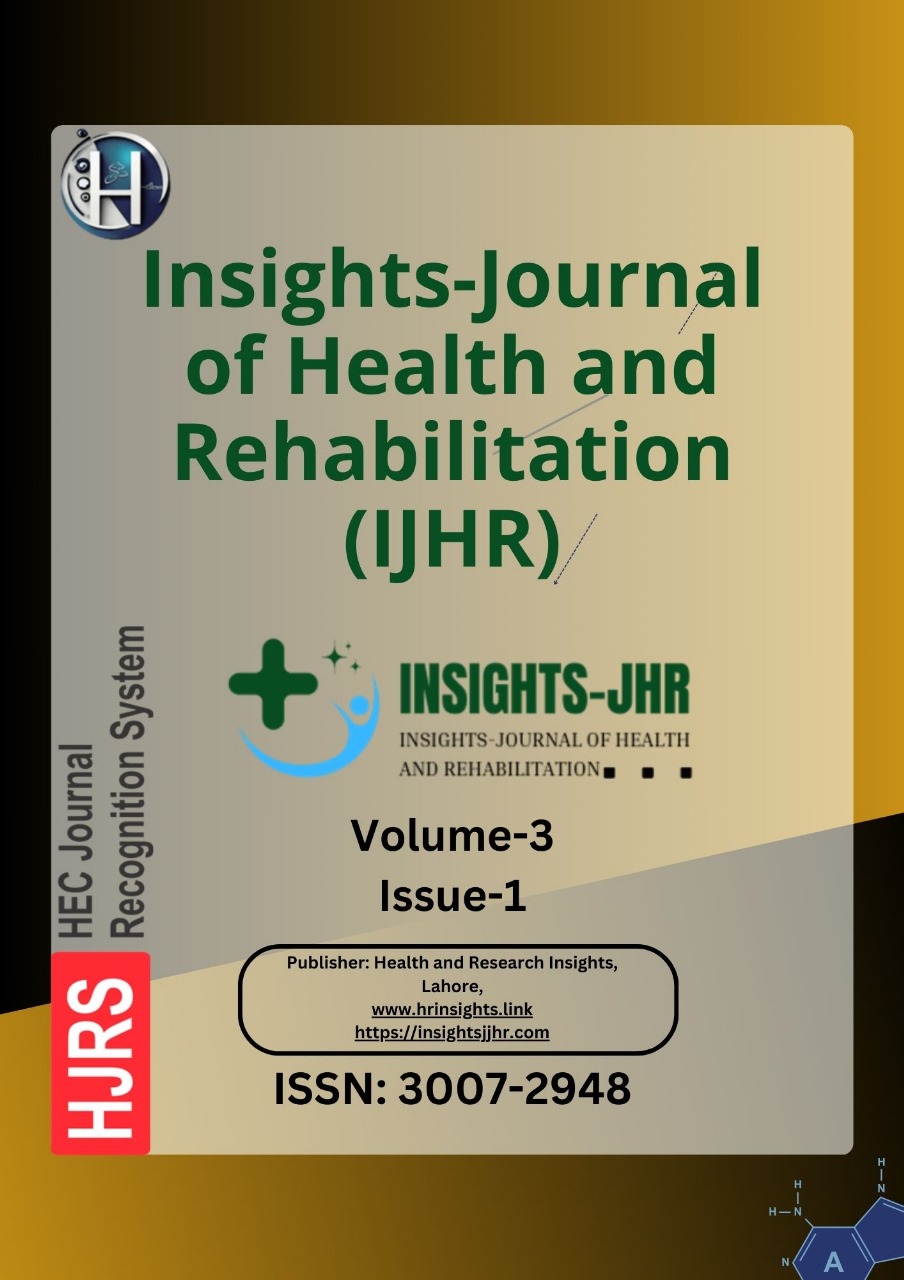ATHLETIC RUNNER’S QUALITY OF LIFE WITH GROIN STRAIN- A CROSS-SECTIONAL STUDY
DOI:
https://doi.org/10.71000/9f1tfv23Keywords:
Athletes, groin strain, hip pain, physical performance, quality of life, sports injuries, Visual Analog ScaleAbstract
Background: Groin pain is a common and debilitating issue among athletes, particularly those engaged in high-intensity sports involving kicking, sprinting, and rapid directional changes. It accounts for approximately 6% of all athletic injuries, with prevalence increasing to 13% in specific sports like soccer. The condition often leads to impaired mobility, reduced quality of life, and suboptimal athletic performance. Despite its impact, there is limited evidence regarding its prevalence and effects on athletic runners.
Objective: To evaluate the prevalence of hip pain and assess the quality of life in athletic runners with groin strain using validated measurement tools.
Methods: This cross-sectional study was conducted using non-probability convenience sampling. A total of 150 athletes aged 18-35 years with groin strain were recruited from various sports physiotherapy clinics. Participants were evaluated using the Visual Analog Scale (VAS), the Copenhagen Hip and Groin Outcome Score (HAGOS), and the Lower Extremity Functional Scale (LEFS) to assess hip pain and quality of life. Data were analyzed using SPSS version 24, and correlations were determined with a significance level of p < 0.05.
Results: Of the participants, 64.7% were male, and 35.3% were female, with a mean age of 25 ± 4.6 years. The prevalence of hip pain was 88%. Pain intensity levels included no pain (12%), mild pain (38.7%), moderate pain (31.3%), and severe pain (18%). Functional impairment was evident, with 38.1% scoring less than 40 on LEFS. A significant negative correlation (p < 0.05) was observed between hip pain and quality of life, indicating the adverse impact of groin strain on athletic performance.
Conclusion: Groin strain significantly impairs quality of life in athletic runners, reducing physical function, general well-being, and athletic performance. Early diagnosis and tailored rehabilitation protocols are essential to mitigate these effects.
Downloads
Published
Issue
Section
License
Copyright (c) 2025 Muhammad Tariq, Muhammad Sharif Waqas, Hafiz Muhammad Abu Bakar Rashid, Aleena Jafar, Javeria Nadeem, Imtiaz Ahmad (Author)

This work is licensed under a Creative Commons Attribution-NonCommercial-NoDerivatives 4.0 International License.







